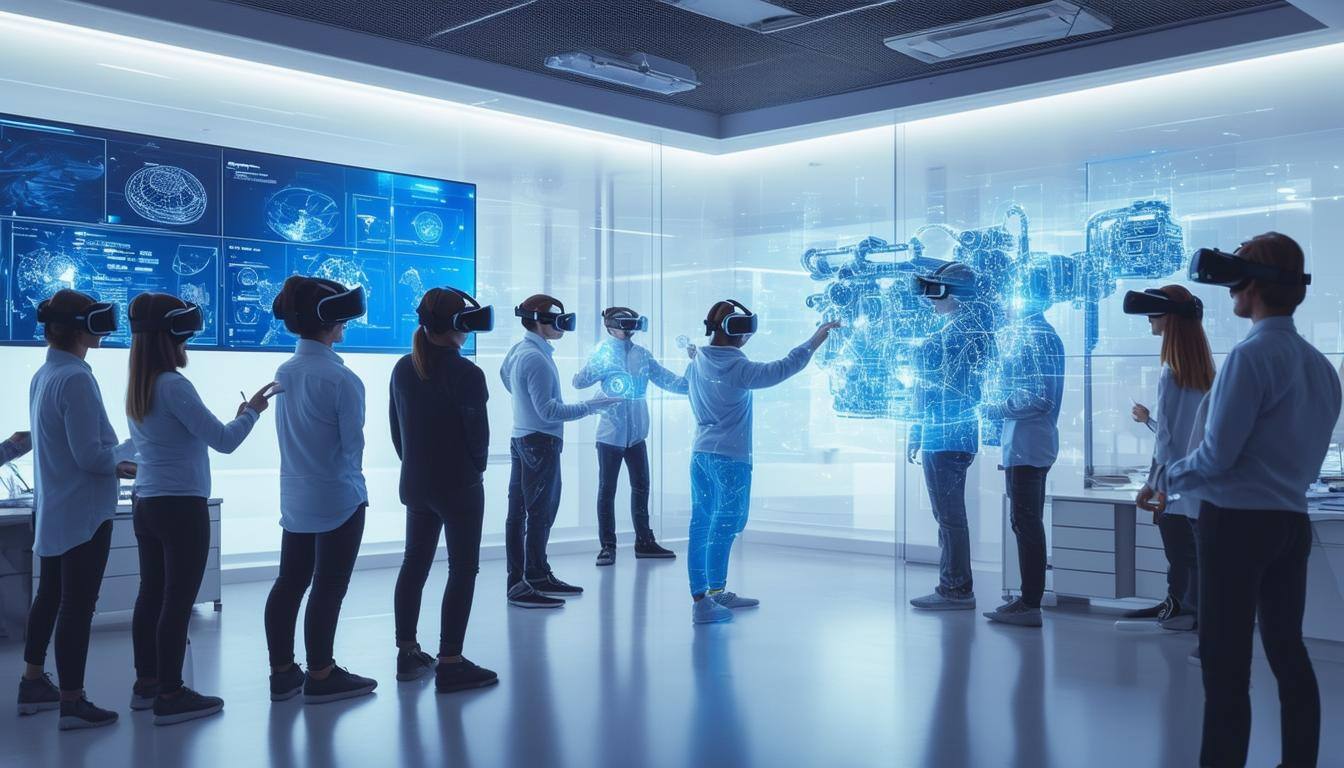How Immersive Training Programs Help Redefine Skill Development

The modern workplace is evolving faster than ever. Rapid technological advancements, evolving job roles, and a constant need for upskilling and reskilling have created a demand for training programs that are more engaging, effective, and impactful. Traditional training methods like classroom lectures, static e-learning modules, or bulky manuals are difficult to keep up with. Immersive training programs are a dynamic blend of virtual reality (VR), augmented reality (AR), mixed reality (MR), and simulation-based learning. These programs are transforming how employees acquire, practice, and master skills.
When we talk about immersive training meaning, we refer to the realistic, interactive scenarios learners experience through technologies like AR or VR. Now, let’s discuss how immersive training works and why it is becoming so crucial for modern workplaces.
The Growing Skills Gap and the Need for Innovation
The World Economic Forum estimates that 50% of all employees will need reskilling by 2025 due to automation and AI. Meanwhile, industries like healthcare, manufacturing, and technology face acute talent shortages. Traditional training often falls short because it’s passive, time-consuming, and lacks real-world applicability. For example, reading about a complicated machinery repair or watching a video on conflict resolution doesn’t provide hands-on experience. Employees need environments where they can safely fail, iterate, and build muscle memory.
Immersive training addresses these gaps by simulating real-life challenges. Whether a nurse practices emergency procedures in a virtual ER or a salesperson role-plays tough client negotiations in a digital environment, learners gain confidence and competence faster.
What Makes Immersive Training Different?
Immersive training uses cutting-edge technology to create interactive, multi-sensory experiences. Here’s a breakdown of the key tools:
- Virtual Reality (VR): Completely digital environments that replicate real-world settings. Users wear headsets to interact with 3D simulations.
- Augmented Reality (AR): Overlays digital elements like instructions or data onto the physical world via smartphones, tablets, or AR glasses.
- Mixed Reality (MR): Blends physical and digital worlds so users can manipulate virtual objects in real-time. An example is holographic machinery repairs.
- 360-degree Video and Simulations: Pre-recorded scenarios that let learners explore environments from every angle.
Unlike traditional methods, immersive training is experiential. Instead of memorizing steps, employees perform tasks, make decisions, and see immediate results without real-world risks.
Key Benefits of Immersive Training
The advantages of immersive training are more than just being engaging. Let’s take a closer look at how these programs are transforming skill development:
1. Improvement in Engagement and Retention
Attention spans are shrinking continuously. A LinkedIn study found that employees only have 24 minutes a week for formal learning. Immersive programs combat disengagement by making learning active and memorable. For example, VR training has been shown to improve retention rates by up to 75% compared to lectures or reading, according to PWC. When learners physically assemble a product in VR, they can remember the process better.
2. Safe Spaces for High-Stakes Skills
Mistakes in fields like aviation, healthcare, or chemical engineering can be catastrophic. Immersive training lets employees practice critical tasks in risk-free environments. Boeing, for example, uses VR to train pilots on emergency procedures, while Johnson & Johnson employs AR simulations for surgeons to rehearse operations. These programs reduce errors, build muscle memory, and prepare teams for rare but critical scenarios.
3. Instant Feedback and Personalization
Traditional training often lacks actionable feedback. But immersive tools track every move. Did a technician skip a safety step during a virtual equipment inspection? The system flags it instantly. Some platforms even use AI to adapt scenarios based on a learner’s progress. For example, if an employee struggles with customer de-escalation techniques, the simulation might loop them through additional practice rounds.
4. Scalability and Accessibility
Rolling out in-person training across global teams is costly and logistically challenging. Immersive programs, once developed, can be deployed anywhere. Walmart, for instance, trained over 1 million employees using VR modules on compliance, customer services, and Black Friday preparation without flying staff to centralized locations. Also, cloud-based platforms allow learners to access training on-demand and fit it into their schedules.
5. Bridging the Soft Skills Gap
Technical skills are only half the battle. Modern workplaces demand empathy, leadership, and communication. Immersive training becomes helpful in this case, too. Many platforms offer VR modules where managers practice giving feedback to virtual employees or use AI avatars to simulate difficult workplace conversations. These exercises help learners refine soft skills in low-pressure settings.
Industries Leading the Charge
The applications of immersive training are vast and span across various industries:
- Healthcare: Surgeons use VR to rehearse complex surgeries; nurses can simulate patient interactions; and medical students can explore the human body in detail.
- Manufacturing: Companies like Siemens and GE use AR to guide technicians through equipment repairs via digital overlays.
- Retail: VR helps employees practice inventory management, customer interactions, and even store layout optimization.
- Corporate Training: Companies like Accenture and Verizon use immersive programs for leadership development and diversity training.
Challenges and Considerations
While immersive training holds immense potential, it’s not without its challenges. Here are some of the challenges you may encounter:
- Cost and Technology Barriers: High-quality VR/AR hardware and software development can be expensive. However, prices are dropping as adoption grows.
- Content Development: Creating realistic simulations requires collaboration between instructional designers, subject matter experts, and developers.
- Adaptation Curve: Employees unfamiliar with VR/AR may need adjusting time. In such cases, communication about the program’s benefits is required.
To overcome these challenges, businesses should start with pilot programs, focus on high-impact use cases, and partner with immersive technology providers.
The Future of Workplace Learning
As VR/AR hardware becomes lighter, cheaper, and more intuitive, immersive training will shift from novelty to necessity. Future advancements may include:
- AI-driven personalization in systems that automatically generate scenarios based on individual skill gaps.
- Haptic feedback integration in gloves or suits lets users feel virtual objects, which will enhance the realism.
- Metaverse collaboration in virtual environments where global teams learn and solve problems together in real time.
Conclusion
With technology becoming more advanced, immersive training is expected to be even more advanced and accessible. We can expect more realistic simulations, personalized learning experiences, and greater integration with other learning technologies. Integrating cutting-edge technologies with training programs helps employees learn faster, retain more, and perform better. In addition, this allows businesses to build a more agile workforce, reduce training costs, and have a more decisive competitive advantage.
Related Posts
Join the movement.
Your Entourage journey starts here. Join Australia's largest community of over 500,000 business owners and entrepreneurs, and receive instant access to exclusive content and updates delivered straight to your inbox.




